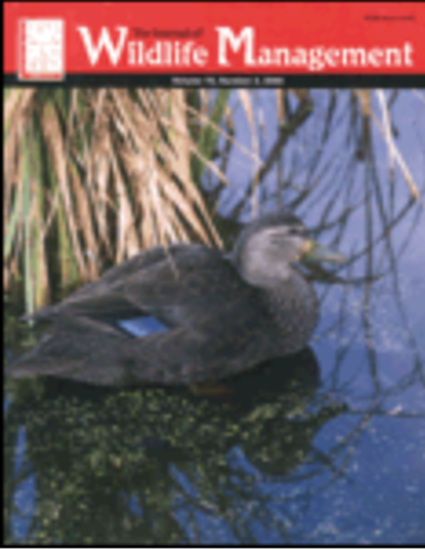
Article
Effects of Habitat Characteristics of Gadwell Nest Predation and Nest-Site Selection
Journal of Wildlife Management
(1989)
Abstract
We compared characteristics of successful gadwall (Anas strepera) nests and those destroyed by mammalian predators (i.e., striped skunks [Mephitis mephitis]). Lateral cover density, understory cover height, species richness, vegetative penetrability, and patch size were significant determinants of the fate of a nest. Nest success was also influenced by 3 nonvegetative variables: minimum distance to water, dike width, and nest initiation date. Predation rates on nests differed (P < 0.0001) among 3 habitat categories and months. The highest success rates, 58.5 and 72.4% in June and July, respectively, occurred in a habitat with a high degree of structural diversity and a well-developed understory. Observations of 16 marked skunks revealed that their widely searching foraging strategy in June was conducive to finding nests, whereas a sit-and-wait strategy observed in July was not. Gadwalls used nest sites associated with vegetation characteristics of the overstory component but not those of the understory component that provided protection from mammalian predation.
Disciplines
Publication Date
1989
DOI
DOI: 10.2307/3801319
Citation Information
Michael L. Wolfe. "Effects of Habitat Characteristics of Gadwell Nest Predation and Nest-Site Selection" Journal of Wildlife Management Vol. 53 Iss. 1 (1989) p. 129 - 137 Available at: http://works.bepress.com/michael_wolfe/20/
